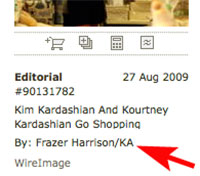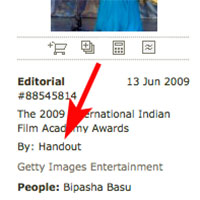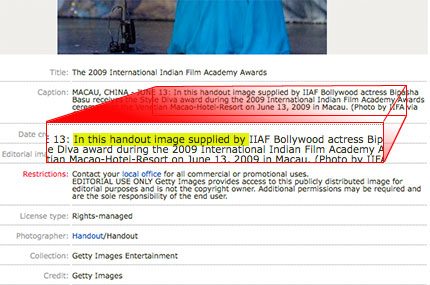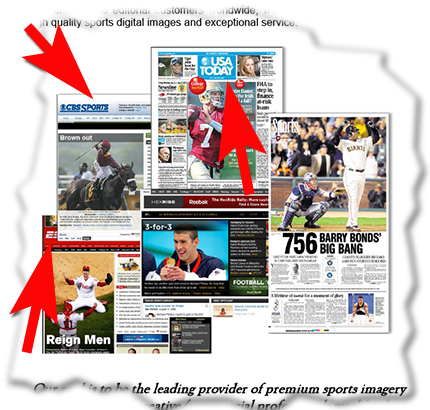UPDATE: Kathryn Ellison, who was the author of this book, writes in her comments below
"...The book has been cancelled, the site has been taken down, all images have been deleted from the server...", and you can read more about her position on this blog posting in her comment. She has also deleted her authorship of this book from her LinkedIn profile.
Rip Off: - noun. exploitation, esp. of those who cannot prevent or counter it.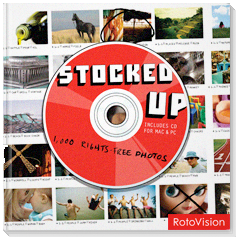
If you wanted to get yourself 1,000 free photographs that are royalty free, and a printed catalog for ease of browsing, what would be the best way? Why, call it an "opportunity" to be published in a book, and pitch it to unsuspecting students. When submiting "
up to five photos" to the proposed book "
Stocked Up: 1,000 Royalty Free Photographs" you grant royalty-free rights for the "privilege" of being published. So goes the idea that author is proposing for a book being developed for
How Books and
Rotovision SA.
"
if I could...would ya..." So begins the scam that began on used car lots and now reads like "
if I could promise your photo would get published, would ya give me all rights to it....". Kristin Ellison (LinkedIn:
Profile) essentially is making that offer, because she wants to sell a photography book. And, if you want to sell a photography book, what better way to maximize your sales than to give everyone who buys the book a free DVD with 1000 high resolution photographs, including an unlimited worldwide license to commercially exploit each photograph?
(Continued after the Jump)
Don’t have 1000 good photographs to include in your DVD giveaway? No problem. Just sucker a bunch of photo students into sending you their best images and granting you unlimited usage rights and sublicensing rights in exchange for “exposure” and a grand total of $0. At least, that’s the genius gameplan that “author” Kristin Ellison and her publisher How Books and Rotovision SA schemed up for their new book. Ellison, on behalf of How and Rotovision are canvassing the photo schools and encouraging photo students to submit their 5 best photographs for inclusion in the book and DVD. The sad part is, they will probably receive far more than 1000 submissions, from students who don’t yet understand that by granting unlimited rights to Rotovision, they are injecting their images into the global marketplace forever, and are forfeiting any possibility of issuing exclusive licenses in those images. Rotovision also requires that each contributor indemnifies Rotovision from any liability associated with the photographs. Meaning that if any one of the adults or children appearing in the photographs sees their likeness in an advertisement, or for example, on a Nazi web site, and sues Rotovision, the student photographer is solely liable to the models.
Further, the website that promotes this endeavor is misrepresenting things to the unsuspecting contributors. When they write "Please note: Contributors maintain all rights to, and ownership of, all images submitted. Contributors are granting RotoVision the right to publish their images in the book and on the DVD to be used by readers in any manner they choose."
This is a definitive contradiction. You no longer own any exclusive rights to your work. You don't have the right to license exclusive use to any client, and you have no right to preclude someone from doing something objectionable with your work. The list goes on.
Here's the sales pitch, that went out to educators worldwide:I am the author of the upcoming book “Stocked Up”, a collection of 1,000 photographs. The book will be published next year in the US by How Books, and in the UK and abroad by RotoVision SA. I am writing to you because I am in the process of soliciting images for inclusion from all types of photographers, but especially students. When I was a photography major I submitted my work to a contest and was featured in the resulting book. This was an extremely empowering event for me and gave me confidence in my work. It was a professor who let us know about the contest and made one of our term assignments be to shoot images for submission.
I would be thrilled if you would share this opportunity with your students. It is free to submit work and anyone may submit up to five images via my website www.stockedupbook.com. The website contains all the details and necessary forms, but if you have any questions please do not hesitate to contact me at any point.
Thank you so much for your time and consideration.
Sincerely,
Kristin
Kristin Ellison
Author
Stocked Up: 1,000 Rights-Free Photos
www.stockedupbook.com
So, who exactly is Rotovision, and How Books? It can't be that this is the same How Books that publishes The Photographers Market book each year, or The Graphic Artists Guild Handbook of Pricing & Ethical Guidelines, or The Designers Guide to Marketing and Pricing, can it? Rotovision SA also has published a number of respectable books too, so it is surprising that they would be involved in something like this.
The contract you are required to sign reads, in part:1 - I hereby assign and grant RotoVision permission to reproduce at any size the image/s submitted by me for inclusion in the Work, in all editions, co-editions, revisions, and reprints of the Work...The sole consideration for granting these rights shall be the promotional benefit to me of inclusion in the Work.
2- Contributors will not recieve complimentary copies as a result of their images being included in the book.
3 - Rotovision will have no liability over users of the DVD...Rotovision can take no responsibility for any pirating and onward sales of the images...
This, and the rest of the contract, is just plain wrong. The home page pitches you thusly - "Just think, your work could ultimately be featured in a magazine, in a work of art, or on a greeting card, the possibilities are endless!"
Actually, the one possibility that does not exist, is for you to actually get paid by someone who sees your image, because it will be free to them. So, when it comes to earning money, the possibilities actually end - the buck does not stop here.
Interestingly enough, give this idea they propose on the website some thought:"The more images we get to chose from the better the book will be. A better book will mean greater publicity for it (and your work) and wider distribution around the world. So tell your friends about it and get them to submit work as well."
If you're not really thinking at all, you'll tell everyone, and that would be a consistent thought process with agreeing to do this in the first place. The fact is, for every person you tell, you diminish your chances of being in the book. The "author", Kristin Ellison, is also the Editorial Director of WOWIO, having left RotoVision as Executive Editor before even a years' time, only to take up the title "author" for the first time when she was successful in pitching "Stocked Up". Ellison remains also as Editorial Director at WOWIO, who's slogan is "Free Books Free Minds". Among the books they are offering for free reading online is Susan Sontag's On Photography; Aerial: The Art of Photography from the Sky, and several black and white books by Terry Hope. Outreach to some of the authors and publishers whose material is listed online for free have not yet been returned to confirm these free offerings are legitimate or not.
So, what to do about all this? Why, write to the author and publishers to voice your displeasure. The "Author", who is better ascribed the title of either editor, or, well, you pick a colorful title, is {redacted} . RotoVision's publisher, whose name is at the bottom of the contract you must sign is April Sankey (LinkedIn: Profile) can be reached at: {redacted} . Their Commissioning Editor Isheeta Mustafi (LinkedIn: Profile) can be e-mailed at {redacted} as well. HOW Books, is a part of F+W Media, so let's start at the top with them. David Nussbaum (LinkedIn: Profile), the Chairman and CEO can be reached at {redacted} . David Blansfield (LinkedIn: Profile), the President can be reached at {redacted} . Also listed as a President is Sara Domville (LinkedIn: Profile), who can be reached at {redacted} . Stacie Berger (LinkedIn: Profile) is their Director of Strategic Communications, and can be reached at {redacted} . While it looks like RotoVision will be doing the distribution outside of the US, HOW looks to be involved in the US, and you might want to let them know how you feel about this idea that HOW Books would promulgate such a bad idea upon under-educated and ill-advised students who are ripe to exploit and have few or no tools to counter such a bad idea. Pressure from the top down on whomever is in charge of the HOW Books division might change their minds.
NOTE: We have redacted the e-mail addresses in this updated post for the author and publisher contacts, since the book has been officially canceled, and there is no longer a need to write to them.
Please post your comments by clicking the link below. If you've got questions, please pose them in our Photo Business Forum Flickr Group Discussion Threads.
[More: Full Post and Comments]
 September 10, 2009 the AP places another feather in their cap as they sign a distribution deal with one of the leading music and entertainment photographers – Frank Micelotta – as he formally launches PictureGroup. AP is just ramping up their NFL deal that they spirited away from Getty Images (The Associated Press and the NFL, 4/15/09), as Micelotta, who left Getty back in January, now has launched PictureGroup with an AP Images distribution deal.
September 10, 2009 the AP places another feather in their cap as they sign a distribution deal with one of the leading music and entertainment photographers – Frank Micelotta – as he formally launches PictureGroup. AP is just ramping up their NFL deal that they spirited away from Getty Images (The Associated Press and the NFL, 4/15/09), as Micelotta, who left Getty back in January, now has launched PictureGroup with an AP Images distribution deal.


